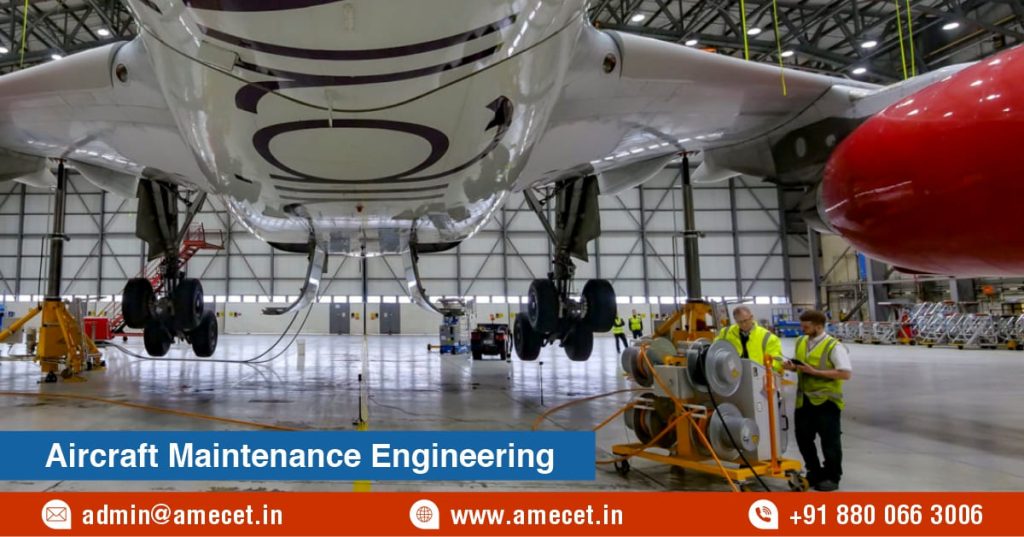What Does an Aircraft Maintenance Engineer Do?
Posted on : 1 August, 2024 6:24 pm
An Aircraft Maintenance Engineer (AME) is responsible for ensuring the safety and efficiency of aircraft. They perform regular inspections, repairs, and maintenance on various aircraft components, including engines, avionics, and structural parts. AMEs diagnose issues, conduct tests, and replace faulty parts to prevent malfunctions. They also ensure compliance with aviation regulations and standards. Their role is crucial for flight safety, as they maintain the high standards required for airworthiness. With a keen eye for detail and technical expertise, AMEs play a vital part in the aviation industry.
Daily Responsibilities of an Aircraft Maintenance Engineer
Aircraft Maintenance Engineers (AMEs) carry out essential daily tasks to ensure aircraft safety and performance. They conduct inspections, perform routine maintenance, and troubleshoot issues to keep aircraft in optimal condition. Their responsibilities include checking systems, replacing worn parts, and adhering to regulatory standards. Accurate record-keeping and effective communication with the flight crew are also crucial for maintaining airworthiness and safety.
Points:
- Conducting pre-flight and post-flight inspections
- Performing routine maintenance checks
- Diagnosing and repairing mechanical and electrical issues
- Replacing or repairing faulty components
- Ensuring compliance with aviation regulations
- Documenting maintenance activities and repairs
- Coordinating with flight crews to address issues
- Utilizing specialized diagnostic equipment and tools
Types of Aircraft Maintenance
Aircraft maintenance is categorized into different types based on the scope and frequency of work. Line maintenance involves routine checks and minor repairs to ensure aircraft readiness between flights. Base maintenance covers more extensive repairs and overhauls at a maintenance facility. Heavy maintenance includes major inspections and refurbishments typically performed at scheduled intervals. Each type is crucial for ensuring the aircraft’s safety and operational efficiency.
Points:
- Line Maintenance: Routine inspections and minor repairs between flights.
- Base Maintenance: Comprehensive repairs and servicing conducted at a maintenance facility.
- Heavy Maintenance: Major overhauls and inspections carried out at scheduled intervals.
- Preventive Maintenance: Scheduled tasks to prevent future issues.
- Corrective Maintenance: Repairs required to fix identified faults.
- Condition-Based Maintenance: Tasks performed based on the condition of components.
- Predictive Maintenance: Using data to predict potential failures before they occur.
- Overhaul Maintenance: Complete disassembly and refurbishment of major components.
Common Maintenance Procedures
Aircraft maintenance involves several key procedures to ensure airworthiness and safety. Technicians routinely perform engine checks, inspect avionics systems, and evaluate structural integrity. Procedures also include replacing worn or damaged parts and conducting functional tests. These tasks are critical for identifying potential issues early and ensuring that the aircraft operates reliably and efficiently throughout its service life.
Points:
- Engine Checks: Regular inspection and servicing of engines.
- Avionics Inspections: Testing and calibrating electronic flight instruments and systems.
- Structural Inspections: Examining the aircraft’s fuselage and wings for damage or wear.
- Fluid Replenishment: Replacing lubricants, hydraulic fluids, and fuel.
- Component Replacement: Changing out defective or worn parts.
- Functional Testing: Verifying that all systems operate correctly.
- Pressure Testing: Ensuring the integrity of fuel and hydraulic systems.
- Cleaning: Removing debris and contaminants from critical components and systems.
The Role of Technology in Aircraft Maintenance
Technology plays a crucial role in modern aircraft maintenance by enhancing efficiency and accuracy. Advanced diagnostic tools and software streamline the identification of issues and the monitoring of aircraft systems. Technologies like predictive analytics and digital record-keeping help in preemptive maintenance, reducing downtime. Automation and robotics also support complex repairs, ensuring higher precision and safety in maintenance operations.
Points:
- Diagnostic Software: Identifies and troubleshoots issues with advanced algorithms.
- Predictive Analytics: Forecasts potential failures using data trends.
- Digital Record-Keeping: Tracks maintenance history and compliance electronically.
- Automated Maintenance Systems: Performs routine tasks with precision.
- Robotic Assistance: Assists in complex or repetitive maintenance tasks.
- Advanced Sensors: Monitors real-time system performance and conditions.
- 3D Printing: Produces custom parts and components quickly.
- Remote Diagnostics: Allows for off-site troubleshooting and support.
Future Trends in Aircraft Maintenance Engineering
The future of aircraft maintenance engineering is set to be transformed by emerging technologies and innovations. Enhanced data analytics, artificial intelligence, and autonomous systems are expected to revolutionize maintenance practices. Predictive maintenance will become more precise, reducing downtime and costs. Sustainable practices and advanced materials will also play a role in improving efficiency and environmental impact, shaping the next generation of aircraft maintenance.
Points:
- Artificial Intelligence: Improves diagnostics and decision-making through machine learning.
- Predictive Maintenance: Uses advanced algorithms to anticipate and prevent failures.
- Autonomous Drones: Inspects and monitors aircraft components remotely.
- Advanced Data Analytics: Analyzes large datasets for better maintenance planning.
- 3D Printing: Enables on-demand production of parts and components.
- Sustainable Practices: Focuses on reducing the environmental impact of maintenance.
- Smart Sensors: Enhances real-time monitoring and condition-based maintenance.
- Digital Twins: Creates virtual models of aircraft for simulation and analysis.
In conclusion, the role of Aircraft Maintenance Engineers is pivotal in ensuring the safety and efficiency of aviation operations. Through meticulous inspections, routine checks, and repairs, they uphold the highest standards of airworthiness. As technology advances, future trends such as AI, predictive maintenance, and autonomous systems will further enhance maintenance practices, improving reliability and reducing costs. Embracing these innovations will not only streamline maintenance processes but also contribute to a more sustainable and efficient aviation industry. The continuous evolution in this field highlights the critical importance of skilled engineers in maintaining the safety and performance of modern aircraft.

